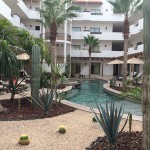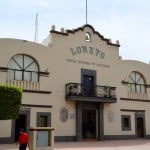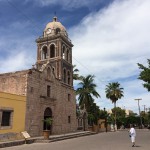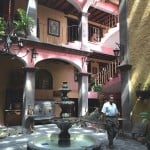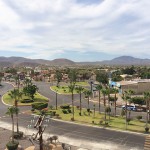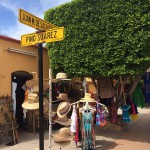Here it is — the genesis of California’s “modern” history and it’s in Baja California.
The spot is marked by the familiar bell that we’ve all seen along what has become known in California as El Camino Real — The Royal Road. It’s the route taken by Spanish padres as they established missions in the then-New World.
The historic spot is at the end of Loreto’s main street. This town of 15,000 sits about two-thirds of the way down the Baja Peninsula, officially known as Baja California Sur (South). We live in what was once Alta (Upper) California, and until the mid-1800s, there was no border and we all belonged to Spain or Mexico, depending on who won the war.

Loreto was the first Spanish settlement in this part of the world.
Jesuit priests built the Mision Nuestra Senora de Loreto (Our Lady of Loreto) here in 1697. The well-preserved church still stands and is an active parish, its thick walls creating a cool respite on warm Baja days. We sit inside the church for awhile, marveling at how the interior belies the fact that the building is 318 years old.
Loreto served as the capital of the Californias until 1777. (It was the capital when San Diego’s mission was founded in 1769.)
Other missions were built in Baja and went through a quick succession of management. After the Jesuits, the Franciscans were put in charge. They were replaced by the Dominicans who accompanied explorer Gaspar de Portola on his hike north to Alta California.
Today’s Loreto is just downright charming and seems eons away from the bad news we often hear coming out of Mexico. The residents like to tell visitors that they are the authentic Mexico — welcoming, laid back, peace-loving, colorful, hard-working and proud of this historic home town.
Loreto’s main-street median is manicured with palms and lots of drought-tolerant vegetation (we could take a lesson from them). A cool leafy arcade welcomes tourists to the central commercial district that is lined with shops offering handmade crafts and clothing. Restaurants and bars draw tourists with al fresco dining, cold beer and delicate local fish cooked to perfection.

And then there’s the ice cream.
With vague direction, we follow our noses down a side street and find a small store with a freezer full of ice cream bars in more flavors than I could ever imagine. They are stacked high — homemade; sweet; creamy; fruity. All those colors and flavors. Finally forced to choose, I grab a coconut bar and am not disappointed. Nothing could taste better on this warm day. We sit under the ficus arcade and relish every bite.
I really want another but it’s time to return to our hotel, Villa del Palmar, about a 40 minute ride south. Soon we are back on the free shuttle that runs between the hotel and Loreto several times a day. It’s been a good day, and it’s not just the ice cream that leaves me wanting more.
Next column: Villa del Palmar – a place to do everything or nothing.


